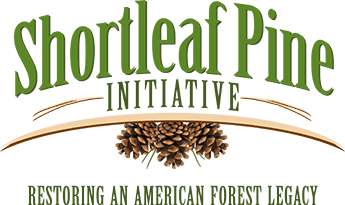|
Shortleaf research, newspaper articles, fact sheets, conference proceedings, literature reviews, and brochures.
Growth A 16-year evaluation of effects of ripping on shortleaf pine on a Missouri Ozarks site
A 16-year evaluation of effects of ripping on shortleaf pine on a Missouri Ozarks site
Gwaze, D., Hauser, C., & Johanson, M. (2006). A 16-year evaluation of effects of ripping on shortleaf pine on a Missouri Ozarks site. Southern Research Station. General Technical Report SRS-92. Retrieved from https://www.srs.fs.usda.gov/pubs/gtr/gtr_srs092/gtr_srs092-047-gwaze.pdf Turner, L. M. (1936). A comparison of roots of southern shortleaf pine in three soils. Ecology, 17(4), 649-658. Retrieved from http://www.jstor.org/stable/1932763?seq=1#page_scan_tab_contents Cain, M. D. (1989). A simple competition assessment system associated with intensive competition control in natural loblolly-shortleaf pine seedling stands. Southern Journal of Applied Forestry, 13(1), 8-12. Retrieved from http://www.ingentaconnect.com/content/saf/sjaf/1989/00000013/00000001/art00005 Lynch, T. B., Huebschmann, M. M., & Murphy, P. A. (2000). A survival model for individual shortleaf pine trees in even-aged natural stands. North Central Research Station, General Technical Report NCRS-212. Retrieved from http://www.treesearch.fs.fed.us/pubs/2266  Contrasting the effects of organic matter removal and soil compaction on root biomass of 9-year-old red oak, white oak, and shortleaf pine in a Missouri Ozark forest
Contrasting the effects of organic matter removal and soil compaction on root biomass of 9-year-old red oak, white oak, and shortleaf pine in a Missouri Ozark forest
Ponder Jr, F. (2011). Contrasting the effects of organic matter removal and soil compaction on root biomass of 9-year-old red oak, white oak, and shortleaf pine in a Missouri Ozark forest. Proceedings, 17th central hardwood forest conference; 2010 April 5-7; Lexington, KY; Gen. Tech. Rep. NRS-P-78. Newtown Square, PA: U.S. Department of Agriculture, Forest Service, Northern Research Station: 323-331. Retrieved from https://www.nrs.fs.fed.us/pubs/gtr/gtr-p-78papers/34ponderp78.pdf Hallgren, S., Tauer, C., & Weeks, D. (1993). Cultural, environmental, and genetic factors interact to affect performance of planted shortleaf pine. Forest science, 39(3), 478-498. Retrieved from http://www.ingentaconnect.com/content/saf/fs/1993/00000039/00000003/art00007  Diameter--growth model across shortleaf pine range using regression tree analysis
Diameter--growth model across shortleaf pine range using regression tree analysis
Yaussy, D., Iverson, L., & Prasad, A. (1997). Diameter--growth model across shortleaf pine range using regression tree analysis. Empirical and process-based models for forest tree and stand growth simulation, 21, 27. Retrieved from https://www.nrs.fs.fed.us/pubs/jrnl/1999/ne_1999_yaussy_001.pdf Somes, H., & Moorhead, G. (1954). Do thinning and prescribed burning affect the growth of shortleaf pine? Northeastern Research Station, Forest Research Note NE-34. Retrieved from http://www.treesearch.fs.fed.us/pubs/12910  Early survival and growth of planted shortleaf pine seedlings as a function of initial size and overstory stocking
Early survival and growth of planted shortleaf pine seedlings as a function of initial size and overstory stocking
Kabrick, J. M., Dey, D. C., Shifley, S. R., & Villwock, J. L. (2011). Early survival and growth of planted shortleaf pine seedlings as a function of initial size and overstory stocking. Paper presented at the Proceedings of the 17th Central Hardwood Forest Conference. USA: USDA For Serv GTR NRS-P-78. Retrieved from https://www.nrs.fs.fed.us/pubs/gtr/gtr-p-78papers/29kabrickp78.pdf Cain, M. D., & Shelton, M. G. (2003). Effects of Alternative Thinning Regimes and Prescribed Burning in Natural, Even-Aged Loblolly–Shortleaf Pine Stands: 25 Year Results. Southern Journal of Applied Forestry, 27(1), 18-29. Retrieved from http://www.ingentaconnect.com/content/saf/sjaf/2003/00000027/00000001/art00003 |

